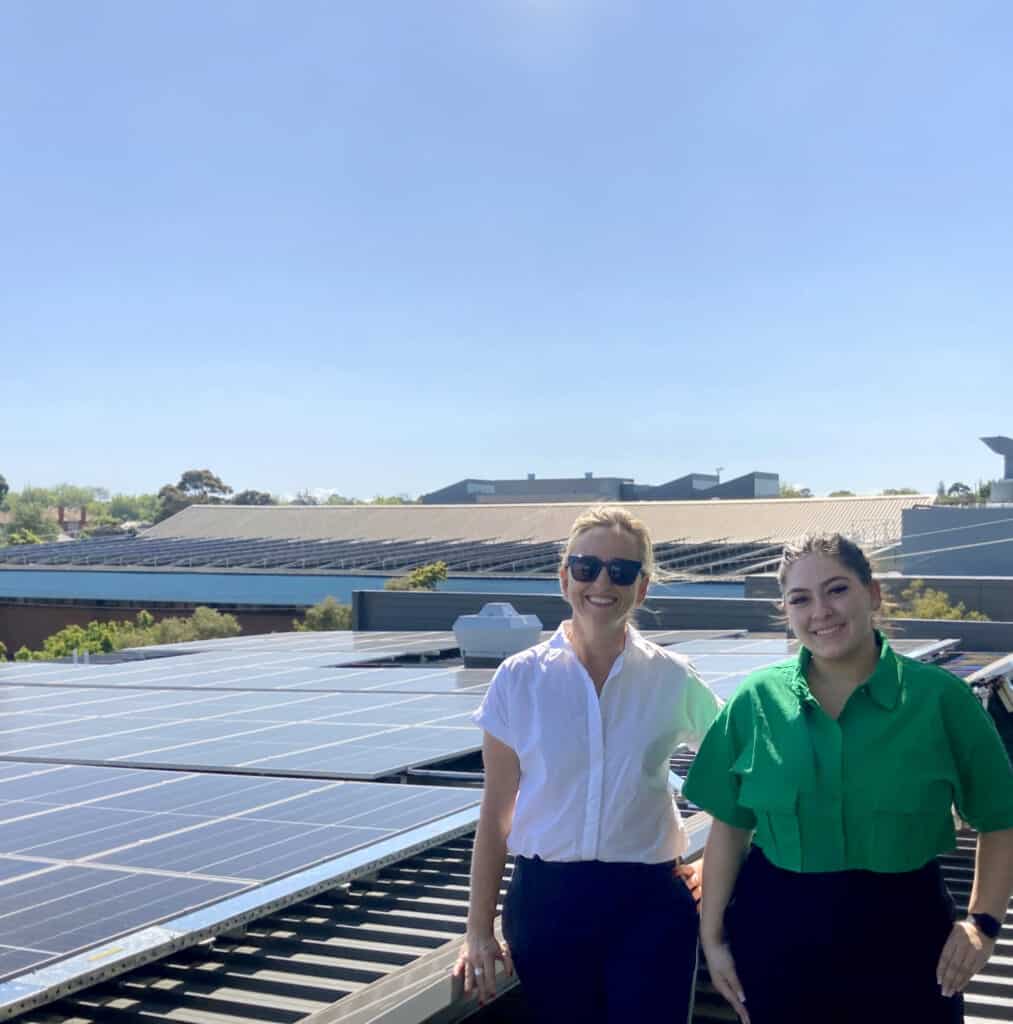The Sustainability Factor
Sophie Drummond-Hall, Class of 2023, interviewed Caulfield Grammar School Building & Infrastructure Manager Annabel Jarvis about the unique opportunity we have as a community to educate and inspire future generations around sustainability.

Education in the school setting takes many forms, both in and outside the classroom, and one that Caulfield Grammar is turning their focus towards is sustainability education. As calls to implement more sustainable practices across businesses, governments and events continue to grow, new sustainability initiatives at our School capitalise on the unique opportunity we have as a community to educate and inspire the future generations.
Building and Infrastructure Manager Annabel Jarvis shares the pivotal and valuable chance educational institutions have to connect the younger generation with sustainability.
“All schools have a role to play in educating students about the principles of sustainability. By demonstrating to students and the community that sustainability is important at an education facility, we’re modelling our commitment to this issue and hopefully others will follow.”
In her position, Annabel facilitates the implementation of sustainability initiatives at our School, especially with the construction of new buildings, which contain many aspects of sustainable design. A key part of this is future-proofing the building so that it can be adaptable for new sustainable developments down the track, ensuring it continues to meet environmental standards for decades to come. There is also a focus on connecting students and staff with nature. More than 100 university studies show that increasing connection with nature has positive impacts on our social, emotional and psychological life. Other significant aspects of the new build include infrastructure for water harvesting, sustainably sourced and recycled materials, high natural air change rate, bike facilities and solar panels.
As we emerge out of winter and into more sunny spring days, more of the School’s power will be coming from our onsite solar panels, with 99kw of solar panels on the Roy Hoult Centre and 426kw of solar panels at Wheelers Hill Campus. The solar panels on the Roy Hoult Centre have reduced emissions from that energy grid by 30 percent.
A fundamental aspect of this community engagement and education is through the work of the Student Sustainability Committee which meets on a fortnightly basis to discuss new initiatives. Over the year it has been amazing to see students willing to stand up in front of their peers and present so many great ideas around sustainability at our Earth Week Assemblies. It was also really exciting to launch the inaugural Sustainability Committee Clothing Swap, where students were able to bring in clothes they no longer wear and exchange them for other items, working to tackle the consequences of fast fashion, with 92 million tonnes of clothes-related waste discarded every year. The impact of fast fashion was also a focus at our Earth Week Assembly this year, sharing information about the process that occurs to create our clothes. Through the Sustainability Committee, like-minded students are able to get together and provide a voice for sustainability at the School and have the chance to act on ideas they are passionate about.
For many Caulfield Grammar students, their first and most memorable interaction with sustainability is at Yarra Junction Campus, whether that is searching for micro-organisms in the creek, an early morning helping Julian milk the cows, tending to the veggie garden, or pumping water for the cabins. Not only do the students gain a greater appreciation for being able to shower at home without having to think about whether you have pumped enough water to last your shower, they also have a unique opportunity to connect with nature and get involved with sustainable practices. These lessons will last a lifetime. This is a key part of the hands-on sustainability framework.
“If we can model the behaviours in a school and get the students at an early age to get a deep understanding of the issues, they can then continue the behaviours in their own lives,” says Annabel.
Caulfield Grammar is also moving towards implementing a biodiversity program to offset carbon emissions and improve the protection of grazing areas for the dairy, while also providing an educational experience for the students involved.
As part of a full emissions audit undertaken in 2022, a new waste management program was introduced across all campuses, including new strains of co-mingled recycling and composting. This has seen great success at Caulfield Campus, with the recycling rate increasing from 4 to 23 percent in just the first few months of implementation. Making the most of these new bins and using them correctly is an easy sustainability win for staff and students all round!
Annabel emphasises the community focus as a part of this new program, explaining “this is a School-wide responsibility, and everyone needs to play a part”. She hopes that the entire School community will consider their own environmental footprint and get involved with these exciting programs.



